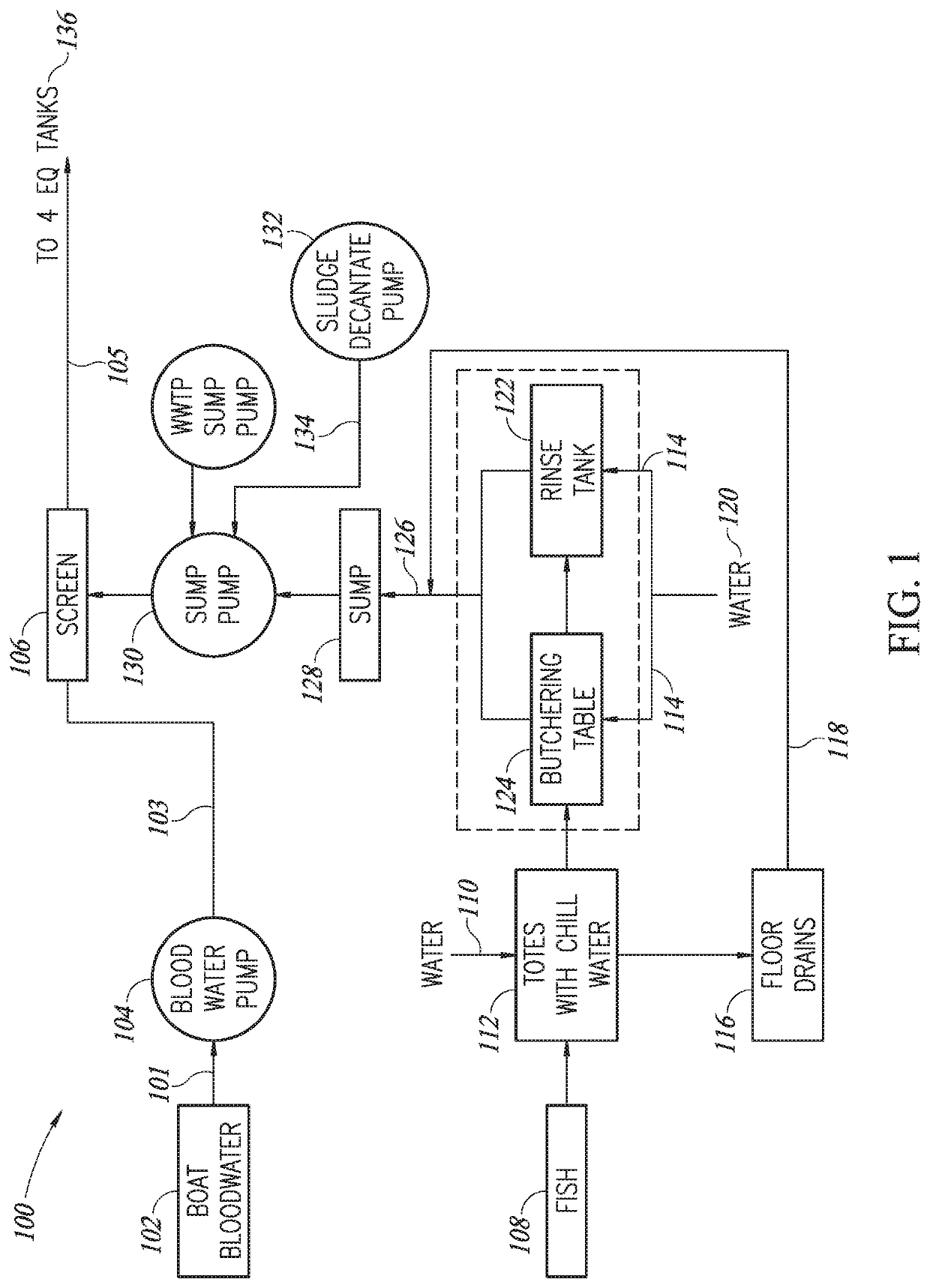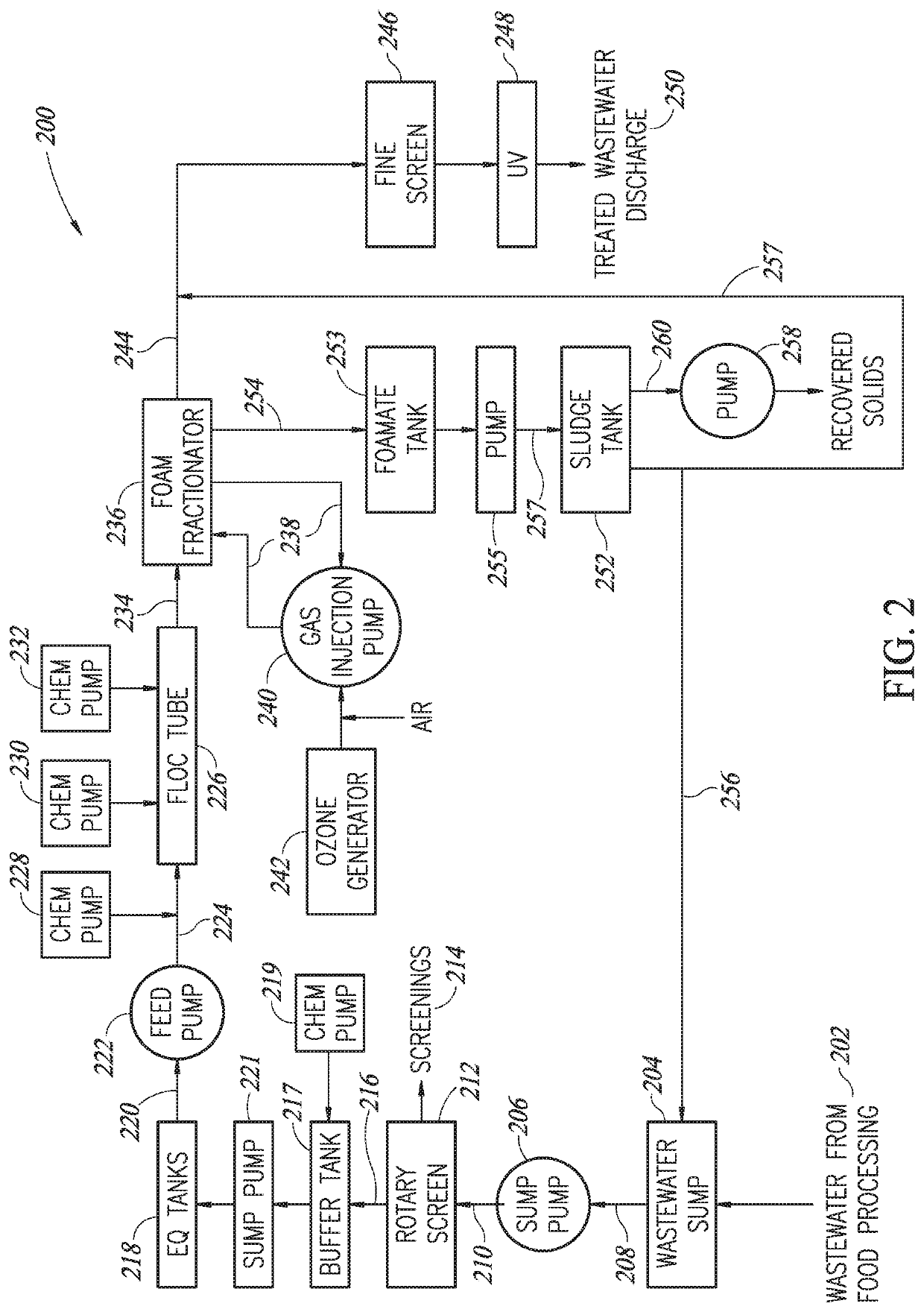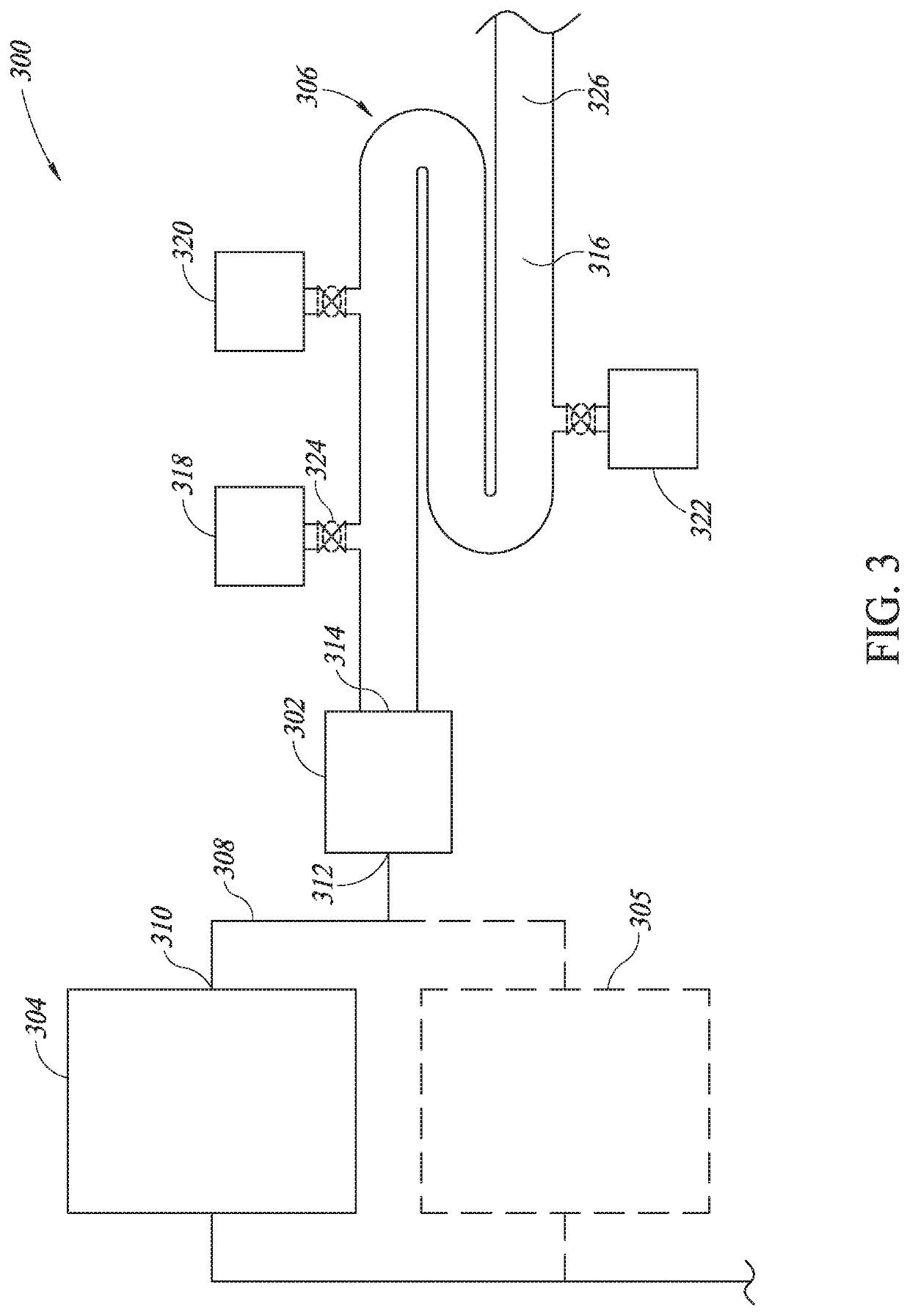Wastewater treatment system and methods utilizing chemical pre-treatment and foam fractionation
- Summary
- Abstract
- Description
- Claims
- Application Information
AI Technical Summary
Benefits of technology
Problems solved by technology
Method used
Image
Examples
Embodiment Construction
[0022]Wastewater having significant amounts of organic matters (e.g., protein, fat, blood) is unsuited for conventional purification systems due to the high biological oxygen demand (BOD), chemical oxygen demand (COD) and total organic carbons (TOC). The present disclosure is directed to separating or recovering solids, especially solids rich with organic matters such as protein and fat, from wastewater in a process involving at least a chemical pretreatment step and a foam fractionation step. The process disclosed herein avoids using polymers such as polyacrylamide, thereby allowing the recovered solids, free of added polymers, to be used for feeds and fertilizer, or to be received in a landfill. The treated wastewater is significantly lower in pollutants, chemicals, bacteria and viruses compared to that of the known processes, such that the treated wastewater can be safely discharged to existing bodies of water with significantly reduced environmental impact. As used herein, “wast...
PUM
 Login to View More
Login to View More Abstract
Description
Claims
Application Information
 Login to View More
Login to View More - R&D Engineer
- R&D Manager
- IP Professional
- Industry Leading Data Capabilities
- Powerful AI technology
- Patent DNA Extraction
Browse by: Latest US Patents, China's latest patents, Technical Efficacy Thesaurus, Application Domain, Technology Topic, Popular Technical Reports.
© 2024 PatSnap. All rights reserved.Legal|Privacy policy|Modern Slavery Act Transparency Statement|Sitemap|About US| Contact US: help@patsnap.com










